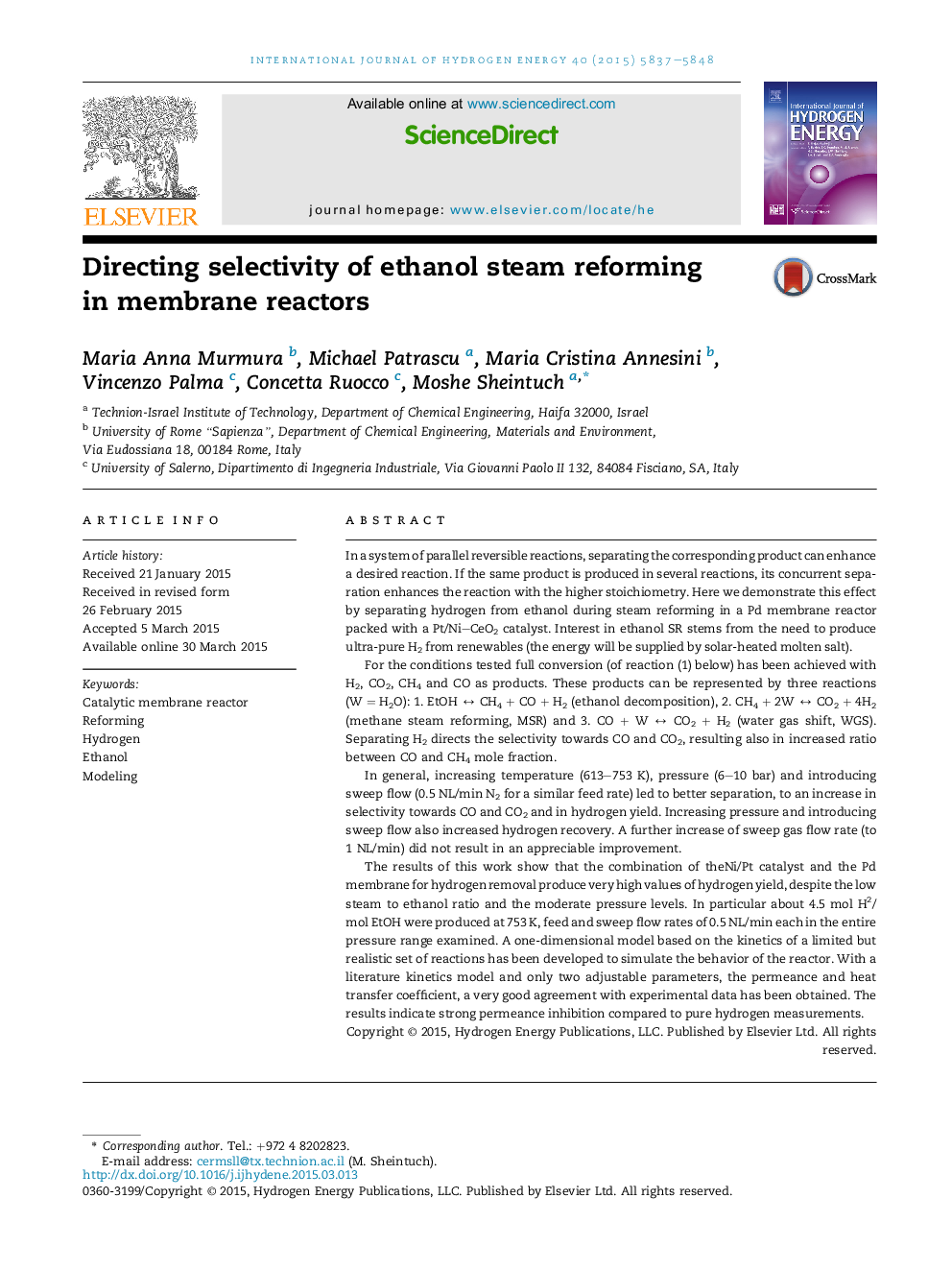| Article ID | Journal | Published Year | Pages | File Type |
|---|---|---|---|---|
| 1275429 | International Journal of Hydrogen Energy | 2015 | 12 Pages |
•High-permeance membrane used allows throughputs higher than those previously used.•High H2 yields with moderate pressures, low S/E and low sweep/feed flow rate ratio.•The foam catalyst results in good radial heat transfer.•Results are predicted with a model with 1 adjustable parameter: membrane permeance.•Permeance lower than value measured in pure H2: membrane inhibition discussed.
In a system of parallel reversible reactions, separating the corresponding product can enhance a desired reaction. If the same product is produced in several reactions, its concurrent separation enhances the reaction with the higher stoichiometry. Here we demonstrate this effect by separating hydrogen from ethanol during steam reforming in a Pd membrane reactor packed with a Pt/Ni–CeO2 catalyst. Interest in ethanol SR stems from the need to produce ultra-pure H2 from renewables (the energy will be supplied by solar-heated molten salt).For the conditions tested full conversion (of reaction (1) below) has been achieved with H2, CO2, CH4 and CO as products. These products can be represented by three reactions (W = H2O): 1. EtOH ↔ CH4 + CO + H2 (ethanol decomposition), 2. CH4 + 2W ↔ CO2 + 4H2 (methane steam reforming, MSR) and 3. CO + W ↔ CO2 + H2 (water gas shift, WGS). Separating H2 directs the selectivity towards CO and CO2, resulting also in increased ratio between CO and CH4 mole fraction.In general, increasing temperature (613–753 K), pressure (6–10 bar) and introducing sweep flow (0.5 NL/min N2 for a similar feed rate) led to better separation, to an increase in selectivity towards CO and CO2 and in hydrogen yield. Increasing pressure and introducing sweep flow also increased hydrogen recovery. A further increase of sweep gas flow rate (to 1 NL/min) did not result in an appreciable improvement.The results of this work show that the combination of theNi/Pt catalyst and the Pd membrane for hydrogen removal produce very high values of hydrogen yield, despite the low steam to ethanol ratio and the moderate pressure levels. In particular about 4.5 mol H2/mol EtOH were produced at 753 K, feed and sweep flow rates of 0.5 NL/min each in the entire pressure range examined. A one-dimensional model based on the kinetics of a limited but realistic set of reactions has been developed to simulate the behavior of the reactor. With a literature kinetics model and only two adjustable parameters, the permeance and heat transfer coefficient, a very good agreement with experimental data has been obtained. The results indicate strong permeance inhibition compared to pure hydrogen measurements.
